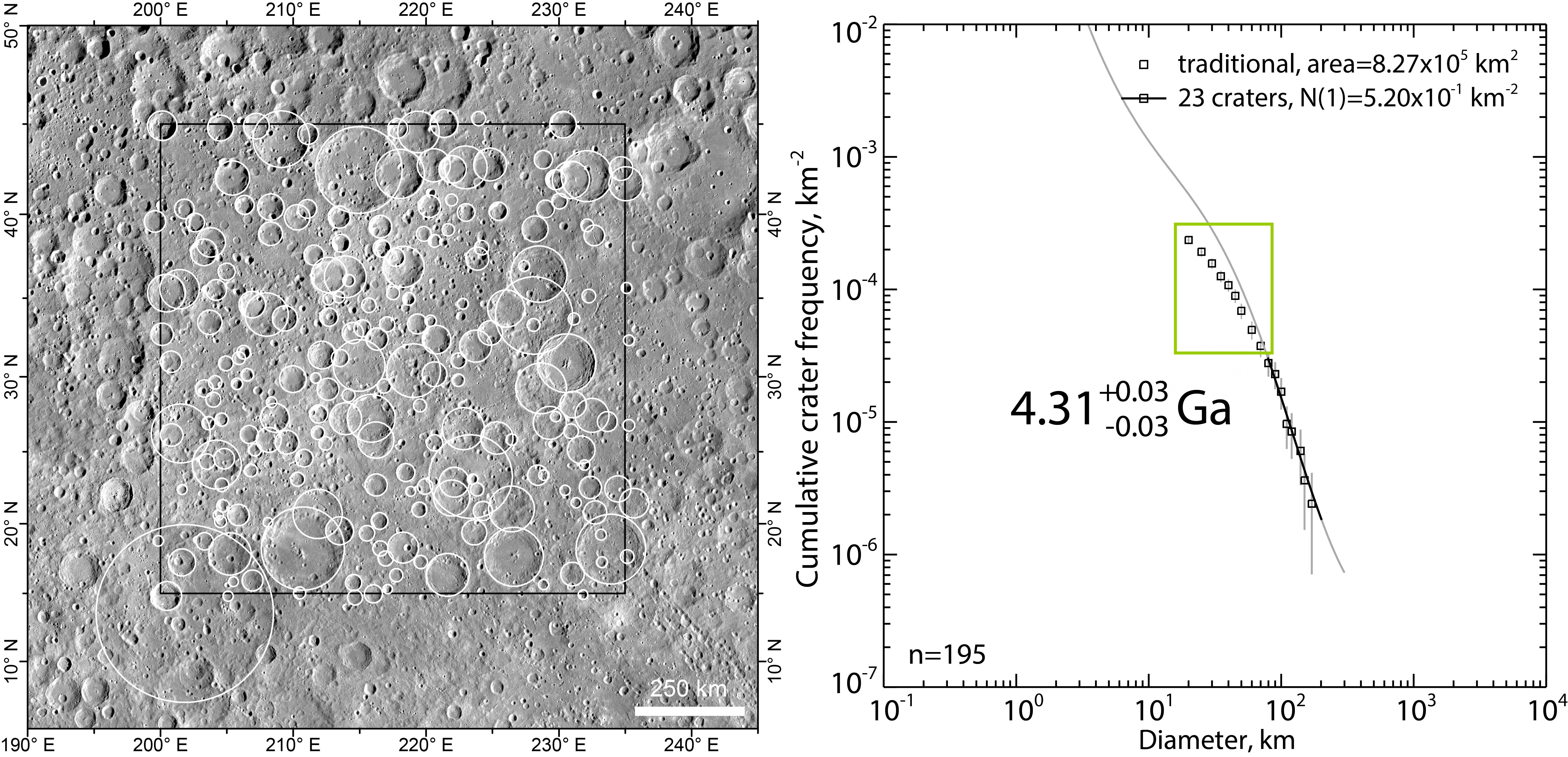Department of Earth Sciences
Service Navigation
Collaborative Research Centre Transregio-170

Subproject A3 “Ancient bombardment of the inner solar system – Reinvestigation of the ‘fingerprints’ of different impactor populations”
In the Collaborative Research Centre „Late Accretion onto Terrestrial Planets“, scientists from five institutions (Freie Universität Berlin, Technische Universität Berlin, University of Münster, German Aerospace Center, Museum für Naturkunde) investigated the late accretion history of planetary bodies in the inner solar system from 4.5 to 3.8 billion years ago. The Planetary Sciences and Remote Sensing research group at Freie Universität Berlin was involved in one of the 16 subprojects. This subproject A3 “Ancient bombardment of the inner solar system – Reinvestigation of the ‘fingerprints’ of different impactor populations“, is focused on the lunar cratering record and analyses based on crater size-frequency distributions (CSFDs). Although CSFDs are widely used for relative and absolute age determinations of lunar surfaces, it is still not clear if there was more than one impactor population involved in the formation of the Moon’s cratering record during the late accretion period. Since current methodologies for dating lunar surfaces assume there was only one population, i.e., the origin of impacting projectiles remained constant, a combination of different populations would influence the age determination results significantly. In subproject A3, we thus conducted detailed geological mapping and crater size-frequency measurements in combination with new approaches of GIS spatial analyses to investigate the shapes of CSFDs and to validate the suitability of regions which were previously used for this purpose. Altogether, this helped to improve the methods of CSFD-based age determination, to examine a potential time-variable lunar crater production function and to further understand the late accretion history of planetary bodies in the inner solar system.
Crater counting area on the lunar surface (left), based on Lunar Reconnaissance Orbiter Camera (LROC) image, and the corresponding crater size-frequency distribution (right). Green box shows the deviation of the measured impact crater distribution from the assumed production function, which was the object of investigation in subproject A3.
Participants in the SFB Transregio-170 project team
- Prof. Dr. Harry Becker (Geochemistry) Project leader
- Dr. Gregory Michael (main contact subproject A3) Supervisor
- Csilla Orgel Analysis of crater distributions
- Christian Riedel Analysis of crater distributions, software development
FINANCIAL SUPPORT • PROJECT FUNDING
• Project SFB TRR 170
• Funded by Deutsche Forschungsgemeinschaft e.V. (German Research Foundation)
• Last Term: Jan 01, 2016 - Dec 31, 2019
